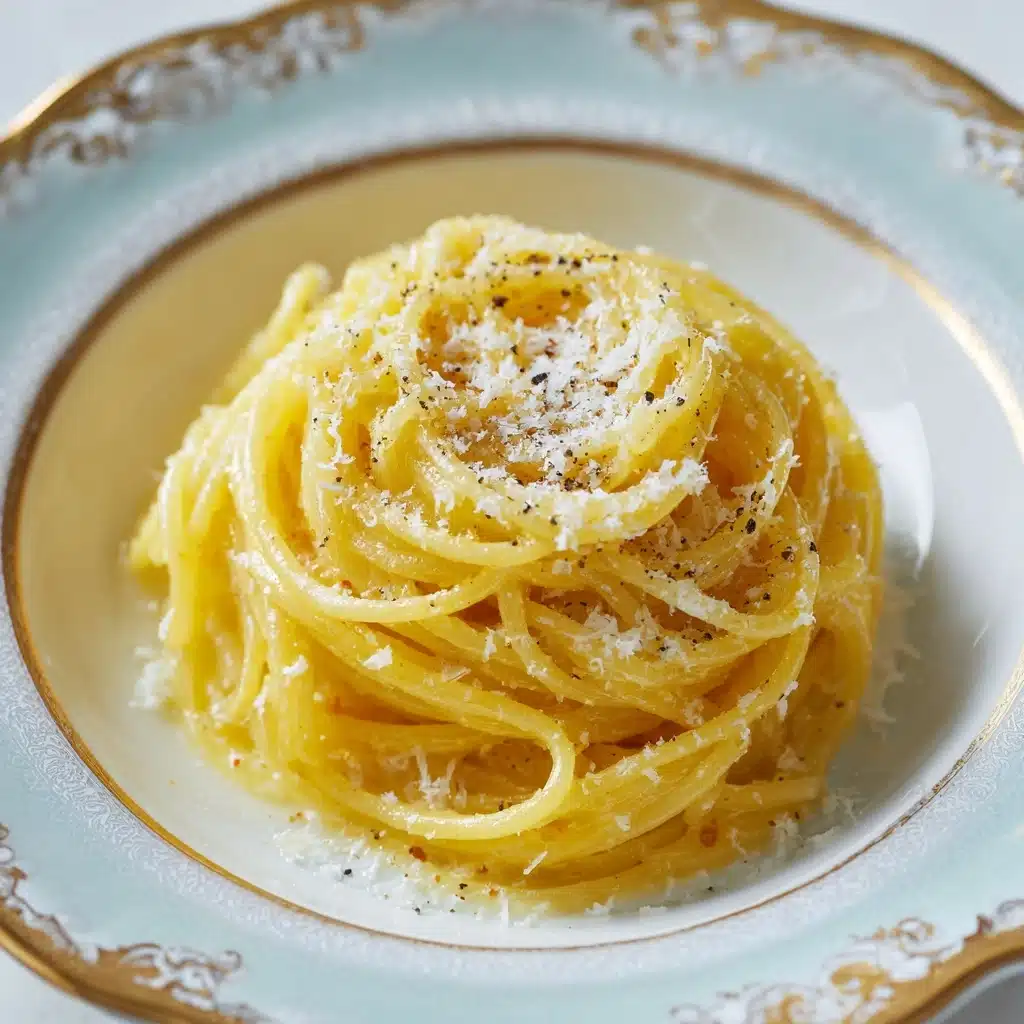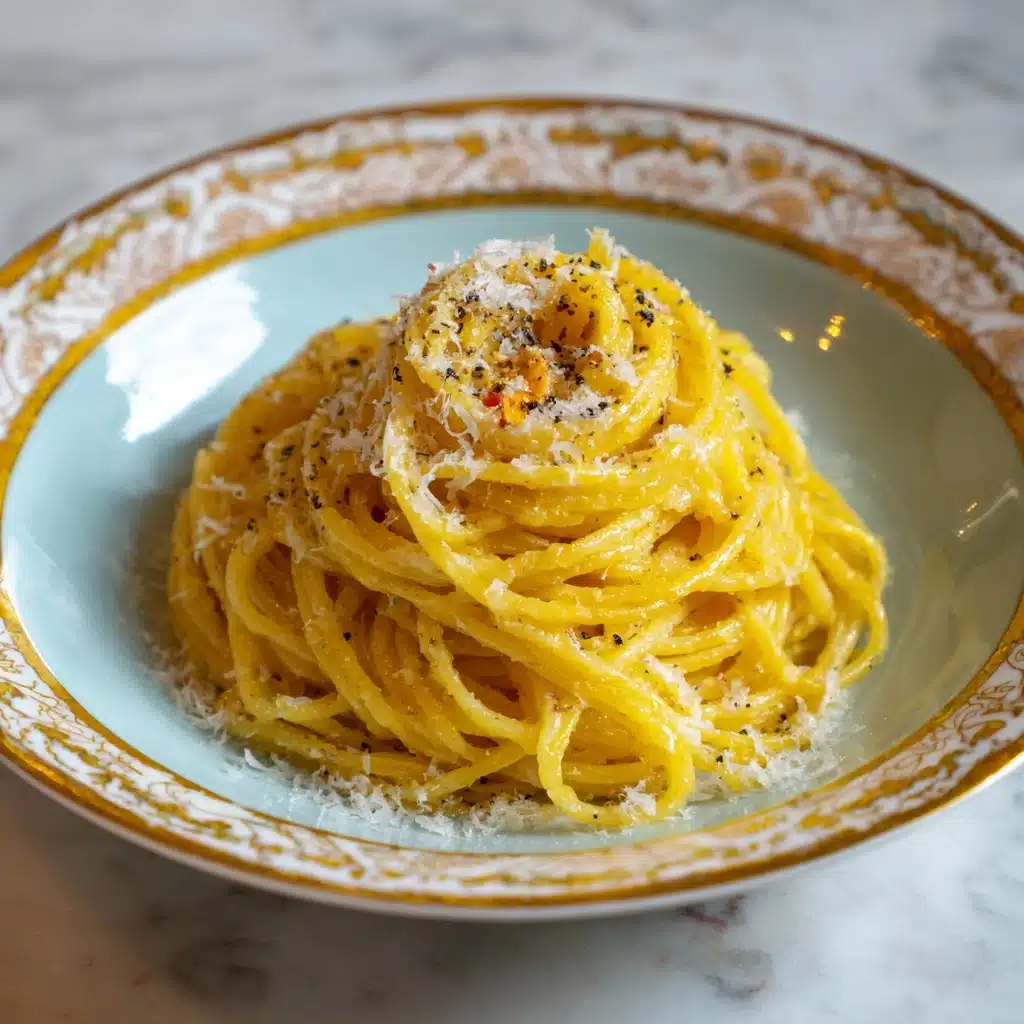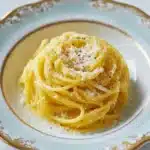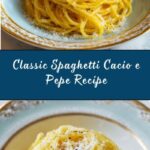Few things in life are as blissfully satisfying as a bowl of Spaghetti Cacio e Pepe. This classic Roman dish brings simple ingredients together in a symphony of creamy cheese and crackling black pepper, hugging every strand of pasta. It’s a true testament to the magic of Italian cooking, where bold flavors shine through humble techniques, and in just 20 minutes, you’ll be swirling up one of Italy’s most iconic comfort foods right in your own kitchen.
Ingredients You’ll Need
The true beauty of Spaghetti Cacio e Pepe lies in its simplicity—each ingredient is chosen with intention and plays a vital role in texture, aroma, and taste. No shortcuts here: quality and freshness make all the difference.
- Spaghetti: The perfect vehicle for the creamy, peppery sauce—choose a bronze-cut variety for extra sauce cling.
- Freshly cracked black pepper: Make sure to use fresh peppercorns and grind right before toasting for maximum flavor and aroma.
- Kosher salt (for pasta water): Controls the seasoning of the entire dish, so be generous—this is your chance to infuse flavor from the start.
- Finely grated Pecorino Romano cheese: Sharp, salty, and tangy, this cheese melts into a luscious sauce when grated finely; never skimp on quality here.
- Reserved pasta water: The starchy liquid gold that transforms cheese and pepper into a silky, cohesive sauce.
How to Make Spaghetti Cacio e Pepe
Step 1: Boil and Salt the Water
Start by bringing a large pot of water to a rolling boil. Don’t be shy with the salt—think of the pasta water as your first layer of flavor. It should taste as ocean-like as you feel comfortable with! Cooking your spaghetti in well-seasoned water ensures every bite is packed with taste from the inside out.
Step 2: Cook the Spaghetti
Drop in the spaghetti and give it a good stir to prevent sticking. Follow the package instructions, but keep a close eye—you want the pasta perfectly al dente for the best texture and authentic Italian bite. Just before draining, carefully scoop out half a cup of that precious pasta water and set it aside.
Step 3: Toast the Black Pepper
While the spaghetti is bubbling away, heat a large skillet over medium heat. Add the freshly cracked black pepper and toast it for about a minute, swirling the pan occasionally. You’ll notice the aroma suddenly intensify—this blooming process wakes up the pepper’s floral, robust qualities and sets the stage for that classic Spaghetti Cacio e Pepe punch.
Step 4: Create the Sauce Base
Pour in the reserved pasta water with the toasted pepper and bring it to a gentle simmer. The starchy water will help the cheese bond to the pasta later, creating that signature creamy consistency without a drop of cream. This step is where the transformation begins!
Step 5: Toss and Emulsify
Add the drained hot spaghetti straight into the skillet. Now comes the magic: gradually sprinkle in the Pecorino Romano while you vigorously toss and stir. Be patient—adding the cheese a bit at a time and stirring constantly means it will melt evenly and coat every strand. Keep tossing until you achieve a glossy, silky sauce that clings lovingly to the noodles. There’s no shortcut here, but the results are so worth it.
How to Serve Spaghetti Cacio e Pepe
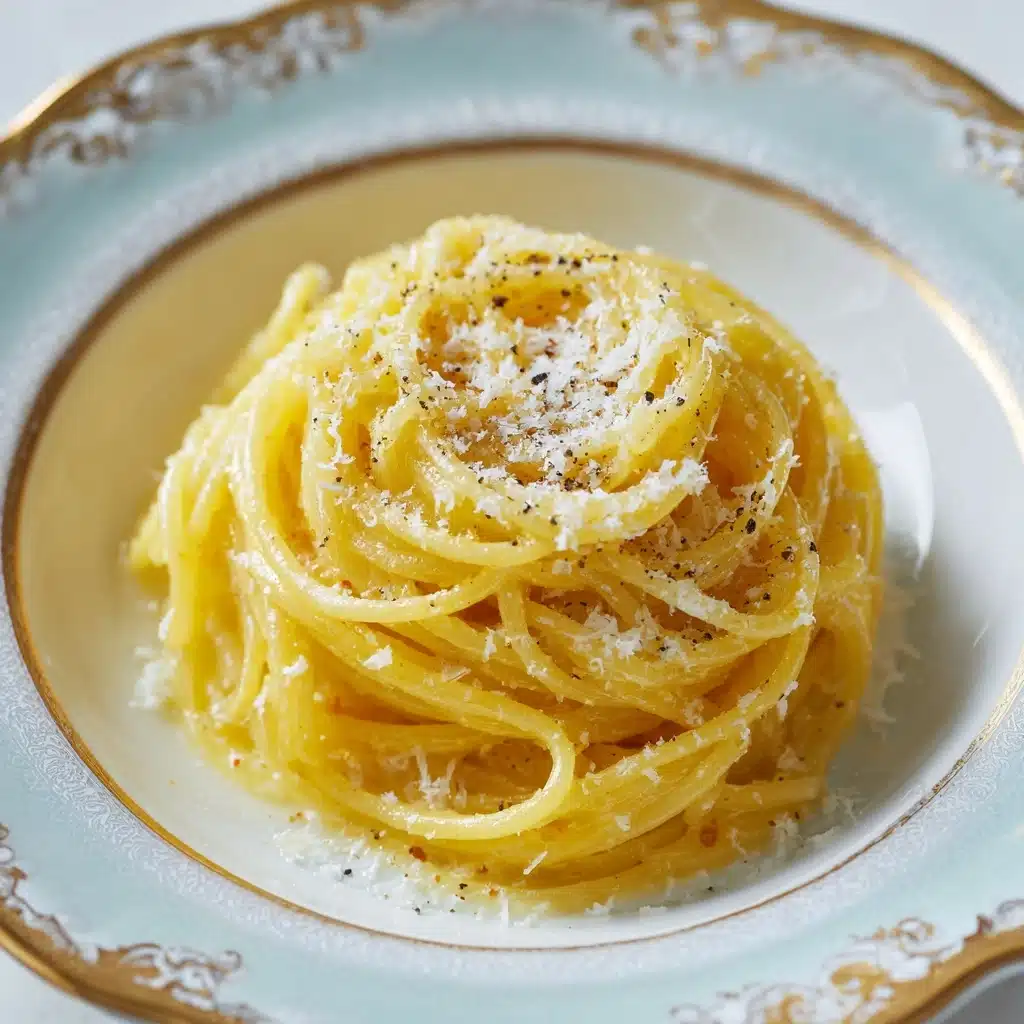
Garnishes
The crowning glory of Spaghetti Cacio e Pepe is a final shower of freshly cracked black pepper and a dusting of more Pecorino Romano. Don’t hold back—the extra cheese and spice amplify every flavor and transform your pasta from delicious to unforgettable. If you’re feeling fanciful, a little lemon zest can add a delicate brightness that really pops.
Side Dishes
Let Spaghetti Cacio e Pepe take the spotlight by pairing it with something light and refreshing. A crisp arugula salad with a lemony vinaigrette balances the pasta’s richness beautifully, or keep it rustic with roasted seasonal veggies. A piece of crusty bread never hurts to mop up every last streak of sauce!
Creative Ways to Present
You can serve Spaghetti Cacio e Pepe in shallow, pre-warmed bowls for a homey touch, or twirl individual nests of pasta with tongs and place them neatly on plates for a bistro-style look. For an extra flourish, use tongs to twirl the spaghetti high and let it spill gently onto the plate—classic drama, Italian style!
Make Ahead and Storage
Storing Leftovers
If you’re lucky enough to have any Spaghetti Cacio e Pepe left, let it cool to room temperature before transferring it to an airtight container. It will keep in the fridge for up to three days, but remember, this dish is best enjoyed fresh when the sauce is at its creamiest.
Freezing
Freezing isn’t recommended for Spaghetti Cacio e Pepe, as the delicate cheese sauce tends to become grainy and separate when thawed and reheated. If you must freeze it, tightly wrap individual portions, but be prepared for a change in texture upon reheating.
Reheating
To bring refrigerated Spaghetti Cacio e Pepe back to life, splash in a bit of warm water or an extra sprinkle of cheese before gently reheating in a skillet over low heat. Stir constantly to help the sauce re-emulsify—avoid the microwave, which can make the cheese clump and break.
FAQs
Can I use Parmesan instead of Pecorino Romano?
While you can swap in Parmesan in a pinch, Pecorino Romano is what gives Spaghetti Cacio e Pepe its authentic tang and salty edge. If you must use Parmesan, look for a high-quality, aged variety, and expect a slightly milder flavor.
Why did my sauce turn out clumpy or stringy?
Clumpy sauce usually means the cheese was added too quickly or the pan was too hot. For the smoothest Spaghetti Cacio e Pepe, add Pecorino gradually off the heat, and toss vigorously so it melts evenly with the starchy pasta water.
Is it essential to use freshly cracked black pepper?
Absolutely! Pre-ground pepper just can’t compare. Freshly cracking it preserves the oils and complexity of flavor that make Spaghetti Cacio e Pepe truly special, giving it that signature aromatic peppery kick.
Can I make Spaghetti Cacio e Pepe gluten free?
Yes, simply substitute your favorite good-quality gluten-free spaghetti and follow the recipe as written. The starchy pasta water is just as important—if your gluten-free pasta seems less starchy, reserve a bit more water for emulsifying the sauce.
What’s the secret to getting the sauce creamy without using cream?
The magic is in the starchy pasta water combined with finely grated Pecorino and constant tossing. The emulsion creates a naturally creamy sauce with nothing but cheese, water, and pepper—pure Italian genius!
Final Thoughts
Few dinners deliver instant comfort like a steaming bowl of Spaghetti Cacio e Pepe. Whether you’re cooking for yourself or hosting friends, this dish is proof that a handful of remarkable ingredients can create something unforgettable. Give it a try, and experience a classic Roman classic that’s simple, speedy, and impossibly delicious!
PrintSpaghetti Cacio e Pepe Recipe
Indulge in the simplicity of Spaghetti Cacio e Pepe with its creamy, cheesy sauce perfectly coating each strand of pasta, accented by the heat of freshly cracked black pepper. This classic Roman dish is a testament to the beauty of few ingredients coming together to create a satisfying meal.
- Prep Time: 5 minutes
- Cook Time: 15 minutes
- Total Time: 20 minutes
- Yield: 4 servings 1x
- Category: Main Course
- Method: Stovetop
- Cuisine: Italian
- Diet: Vegetarian
Ingredients
Spaghetti:
12 oz spaghetti
Freshly Cracked Black Pepper:
1 tablespoon
Kosher Salt (for pasta water):
1 tablespoon
Pecorino Romano Cheese:
1 1/2 cups finely grated
Reserved Pasta Water:
1/2 cup
Instructions
- Boil Water and Cook Spaghetti: Bring a large pot of salted water to a boil. Cook spaghetti until al dente.
- Toast Black Pepper: Toast black pepper in a skillet until fragrant.
- Prepare Pasta Water and Cheese Sauce: Reserve pasta water. Drain pasta. Simmer pasta water with pepper. Add hot pasta. Toss and melt Pecorino Romano.
- Serve: Toss until smooth. Serve hot.
Notes
- Use freshly grated Pecorino Romano and freshly cracked black pepper for best flavor.
- Bucatini or tonnarelli can be used as alternatives to spaghetti.
Nutrition
- Serving Size: 1 bowl
- Calories: 480
- Sugar: 1g
- Sodium: 670mg
- Fat: 18g
- Saturated Fat: 10g
- Unsaturated Fat: 6g
- Trans Fat: 0g
- Carbohydrates: 58g
- Fiber: 3g
- Protein: 19g
- Cholesterol: 40mg

